Programme highlights
Get training in key information technology (IT) skills and graduate with a degree in high demand by the industry worldwide.
This degree meets the high accreditation standards of the Institute of IT Professionals (IITP), who also endorse it as being of the calibre that provides “the best pathway to industry in New Zealand and abroad.”
You’ll be able to make a practical link between the latest digital technologies and today’s business environment ensuring that you’re well equipped to take your place in this exciting and constantly changing industry. This degree will provide you with the skills to analyse, design, develop, implement and maintain information systems across a variety of industries and business types.
As well as a strong grounding in analytical, technical and theoretical concepts this degree also uses hands-on practical methods and teaches important people skills like communication and management skills. At the culmination of this programme you’ll be able to do a real-world project where you can apply your skills in the workplace.
Choose from two majors
You can enhance your future career or personal goals by complementing the core ICT programme with elective courses from one of the following majors:
Networking
- use, install and administer at least two widely-used commercial operating systems
- use, install, troubleshoot and administer a server-based network
- analyse and implement information security requirements
- apply cloud computing concepts in the design and implementation of resilient computing systems.
Software and web development
- understand and apply software engineering best practices, development principles, tools and programming languages apply problem-solving skills and design software algorithms
- analyse business processes and design software solutions to solve and improve them
- implement software solutions for at least two software platforms (such as web, mobile, desktop, and/or cloud, etc.).
To find out more about what internships entail for both our learners and host organisations, click here.
Entry requirements
Applicants must meet the following criteria for admission into the programme:
- Successfully met the NZQA requirements for University Entrance as specified at https://www.nzqa.govt.nz/qualifications-standards/awards/university-entrance/
OR
- If the applicant has at least 60 NZQA recognised credits at Level 5 or higher
OR
- If the applicant can provide evidence of equivalence through practical, professional or educational experience e.g. three-five years’ full time work experience [relevant to ICT] they can apply for entry. Evidence of literacy and numeracy will be required. MIT literacy and numeracy assessments are available
AND
Have English language competence to undertake this programme which is taught and assessed in English. Any applicant whose first language is not English may be required to provide evidence of an overall IELTS (Academic) band score of 6.0 (with no score below 5.5) or equivalent.
For the minimum English language requirements refer to the requirements set out in the NZQF Programme and Accreditation Rules.
Give yourself credit with Recognition of Prior Learning (RPL)
Did you know you can use the knowledge and experience you already have to your advantage?
Your previous work experience and on-the-job skills, volunteering, professional development, and other providers’ qualifications can be recognised as prior learning, matched against credits in our courses, and put towards your qualification – potentially saving you money and possibly helping you to complete your qualification faster Learn more.
Programme structure
You will need to complete eight compulsory courses, one business elective course, plus the courses from your chosen major (360 credits):
Compulsory courses
Level 5
563.546 Professional Practice (15 credits)
563.543 IT System Overview (15 credits)
563.549 Fundamentals of Programming and Problem-solving (15 credits)
563.544 Database Administration (15 credits)
Level 6
561.645 Professional Practice in IT (15 credits)
To be provided with the skills and knowledge expected of an IT Professional and have the opportunity to develop attributes appropriate for working in the IT industry.
Prerequisite: 563.546 Professional Practice and two level 6 BDT courses, or equivalent.
563.683 Change and Project Management in IT (15 credits)
Level 7
562.791 BDT Industry Project (45 credits)
The opportunity to design, implement and evaluate a project for a client by integrating the theory learnt in underpinning courses and applying this practically in an industry environment.
Prerequisite: Level 7 courses in selected major.
563.783 Management of ICT (15 credits)
The purpose of this course is to learn and apply appropriate frameworks, architectures, tools and techniques for analysing business and ICT infrastructure to prepare ICT strategies, policies, protocols and action plans; to align business processes with information systems processes; to prepare an ICT risk management plan; and to understand the influence of ICT innovations in organisational management;
Prerequisite: 563.543 IT System Overview; and 563.683 Change and Project Management in IT.
Business elective course
Select from one of the following Level 5 business courses:
- BSNS5001 Organisations in an Aotearoa New Zealand Context
- BSNS5002 Business Environments
- BSNS5003 Business Functions
These courses are from the Bachelor of Accounting (Level 7).
Courses related to your chosen major
Networking
Level 5
563.545 Hardware Servicing (15 credits)
563.550 Implementing Networks (15 credits)
563.547 IT Technical Support (15 credits)
563.548 Server Management (15 credits)
Level 6
565.689 Advanced Server Services (15 credits)
Prerequisite: 563.550 Implementing Networks; 563.545 Hardware servicing.
565.690 Network Infrastructure (15 credits)
Prerequisite: 563.550 Implementing Networks; 563.545 Hardware servicing.
565.691 Directory Services (15 credits)
Prerequisite: 563.550 Implementing Networks; 563.545 Hardware servicing.
Plus, select four courses from:
561.647 Information Security (15 credits)
Prerequisite: 563.550 Implementing Networks; 563.545 Hardware servicing.
562.616 Automated System Deployment (15 credits)
Prerequisite: 563.550 Implementing Networks; 563.545 Hardware servicing.
562.617 Messaging and Services (15 credits)
Prerequisite: 563.550 Implementing Networks; 563.545 Hardware servicing.
565.692 Software Defined Networking (15 credits)
Prerequisite: 563.550 Implementing Networks; 563.545 Hardware servicing.
565.693 Wireless Networks (15 credits)
Prerequisite: 563.550 Implementing Networks; 563.545 Hardware servicing.
Level 7
565.783 Hot Topic In Networking (15 credits)
Prerequisite: 565.690 Network Infrastructure; 565.691 Directory Services.
565.784 Cloud Computing (15 credits)
Prerequisite: 565.690 Network Infrastructure; 565.691 Directory Services.
Software and web development
Level 5
502.522 Object Oriented Programming (15 credits)
Prerequisite: Fundamentals of Software Development Co requisite System Analysis and Design
502.523 System Analysis and Design (15 credits)
Co-requisite Object Oriented Programming
502.524 Fundamentals of Business Intelligence (15 credits)
Prerequisite: 564.532 Introduction to Databases
502.525 Front End Web Development (15 credits)
Level 6
502.632 Full Stack Web Development (15 credits)
Prerequisite: 502.525 Front End Web Design; 564.532 Introduction to Databases; 502.522 Object-Oriented Programming.
502.633 Software Engineering (15 credits)
Prerequisite: 502.523 System Analysis and Design.
502.634 User Experience and User Interface Design (15 credits)
Prerequisite: 502.522 Object-Oriented Programming; 502.523 System Analysis and Design .
Plus, select four courses from:
561.646 Information and Communication Technologies (15 credits)
Prerequisite: 502.525 Front End Web Development.
562.613 Applied Data Structures (15 credits)
Prerequisite: 502.522 Object-Oriented Programming; 502.634 User Experience and User Interface Design.
562.614 Applied Software Testing (15 credits)
Prerequisite 502.522 Object-Oriented Programming.
562.619 Cloud Application Development(15 credits)
Prerequisite: 563.544 Database Administration; 502.522 Object-Oriented Programming.
564.683 Database Application Development (15 credits)
Prerequisite: 564.532 Introduction to Databases.
Level 7
502.714 Hot Topic in Software (15 credits)
Prerequisite: None.
502.715 Mobile Application Development (15 credits)
Prerequisite: 564.532 Introduction to Databases; 502.522 Object-Oriented Programming; 502.634 User Experience and User Interface Design.
Please note that not all digital technologies and business courses are offered every semester.
Do you want to study a single course, without enrolling into the full programme?
Courses within some of our programmes may be offered as an individual Certificate of Proficiency (COP). Programme entry requirements and course fees apply. For more information, please speak to our friendly Ask Me! team.
Career opportunities
The Bachelor of Digital Technologies prepares graduates for employment in the field of information and communication technologies.
Opportunities for employment depend on the major studied and include:
- IT manager, web developer
- Programmer
- Software developer
- Software architect
- Systems analyst
- Business analyst
- Network/software support specialist
- Multimedia developer
- User experience designer
- Network/database administrator
- IT project manager (incorporating business analytics and intelligence).
For potential salaries visit careers.govt.nz.












